- Accueil
- Blog
- Overhead Crane
- Overhead Crane
Overhead Crane
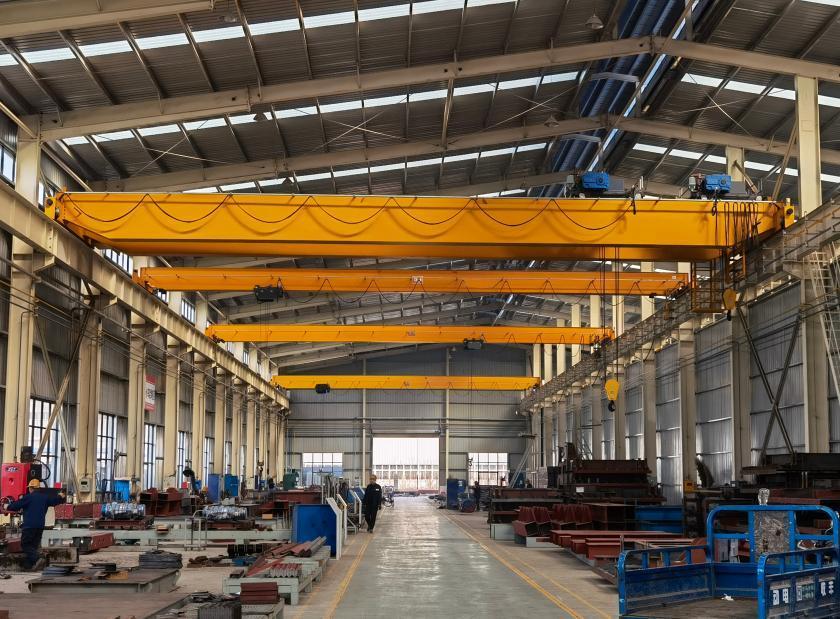
Cost-Benefit Analysis: Investing in Factory Overhead Cranes
Le 01/05/2025
Factory overhead cranes are essential for a wide variety of industries, from manufacturing to logistics. They provide solutions to material handling and lifting tasks, allowing factories to operate more efficiently. However, investing in overhead cranes involves a substantial initial cost, and businesses must weigh the potential benefits to make an informed decision. A thorough cost-benefit analysis is crucial for evaluating whether the investment will yield long-term advantages. In this article, we will explore the factors involved in the decision-making process for purchasing overhead cranes and how to assess their true value.
What Are Factory Overhead Cranes?
Factory overhead cranes, often referred to as overhead traveling cranes (OTC), are designed to lift and move heavy loads across the factory floor. These factory cranes consist of a bridge, hoist, and trolley system mounted on elevated tracks. They travel along a fixed path, allowing them to lift and transport materials with precision. Overhead cranes come in several types, including:
Single Girder Cranes: These are less expensive and suitable for lighter loads.
Double Girder Cranes: These can handle heavier loads and offer more durability.
Gantry Cranes: These are typically used for outdoor applications or on uneven floors.
Overhead cranes are used in industries like automotive manufacturing, steel production, construction, and general material handling, enhancing productivity and safety in these environments.
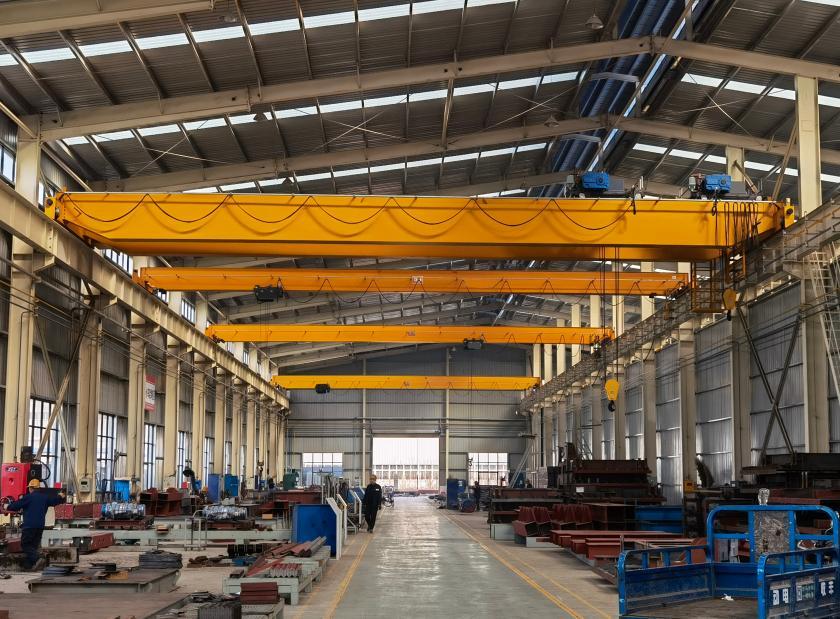
Factors to Consider When Investing in Overhead Cranes
Before deciding to invest in factory overhead cranes, several key factors need to be assessed. These factors will not only impact the initial cost of overhead crane but also its long-term operational performance and return on investment.
1. Initial Investment Costs
The first step in any cost-benefit analysis is to consider the initial investment. Overhead cranes can be expensive, especially for larger systems. The total cost includes:
Crane Type: Single girder cranes are less expensive, while double girder cranes, suitable for higher loads, tend to cost more.
Capacity: Cranes with higher load capacities, such as 50-ton cranes, will come at a higher price point compared to lighter capacity models.
Customization and Features: Advanced features like anti-sway technology, remote controls, or specialized control systems can add to the cost.
Installation and Training: Professional installation is critical for ensuring the crane's proper operation, and training employees on how to use it safely will also be part of the upfront investment.
It's essential to balance the crane's cost against its intended function and the factory's specific needs.
2. Operational Efficiency and Productivity Gains
A key benefit of investing in overhead cranes is the increase in operational efficiency. Cranes automate the process of moving materials, offering a variety of benefits:
Reduced Manual Labor
One of the primary advantages of factory overhead cranes is their ability to eliminate the need for manual labor in heavy lifting tasks. Workers no longer need to physically move materials, which reduces the risk of injury and boosts overall factory safety.
Faster Production Times
Overhead cranes can move materials quickly and efficiently across the factory floor, reducing downtime between different stages of production. This is particularly beneficial in high-volume manufacturing environments where minimizing delays is critical.
Improved Accuracy and Precision
Cranes equipped with modern control systems provide accurate handling of loads, minimizing the chances of errors or damage to products. This precision ensures that materials are transported exactly where they need to go, improving overall production flow.
By improving efficiency and reducing manual labor, factories can enhance productivity and reduce operating costs.
3. Maintenance and Longevity
The long-term performance of an overhead crane relies heavily on regular maintenance. While these cranes are durable, neglecting maintenance can lead to significant issues, such as mechanical failure and safety hazards. The costs associated with maintaining an overhead crane include:
Routine Inspections and Repairs: Cranes require periodic inspections to ensure that they are operating properly. Parts such as hoists, trolleys, and motors need to be checked and maintained regularly.
Replacement of Worn Parts: Over time, certain components may wear out, such as hoist ropes or drive motors. These parts need to be replaced to keep the crane operating efficiently.
Unexpected Breakdowns: While routine maintenance can prevent many issues, unforeseen problems can still arise, leading to repair costs and potential downtime.
Regular maintenance can extend the crane's lifespan, with most overhead cranes lasting between 20 to 40 years when properly cared for. Furthermore, investing in modern cranes with self-diagnostic systems can help detect issues early, reducing the risk of unplanned downtime and costly repairs.
4. Energy Consumption
Energy costs can add up over time, especially in older or less efficient crane models. Modern overhead cranes are designed to be energy-efficient, helping reduce electricity bills in the long run. When evaluating overhead cranes, consider the following:
Energy-Efficient Models: Newer cranes often feature energy-saving components such as variable frequency drives (VFDs), which adjust the motor speed to match the load.
Regenerative Braking: Some cranes are equipped with regenerative braking systems that return energy to the grid or use it for other operations, reducing energy consumption.
Investing in an energy-efficient crane may have a higher upfront cost, but the long-term savings on energy bills can offset this investment.
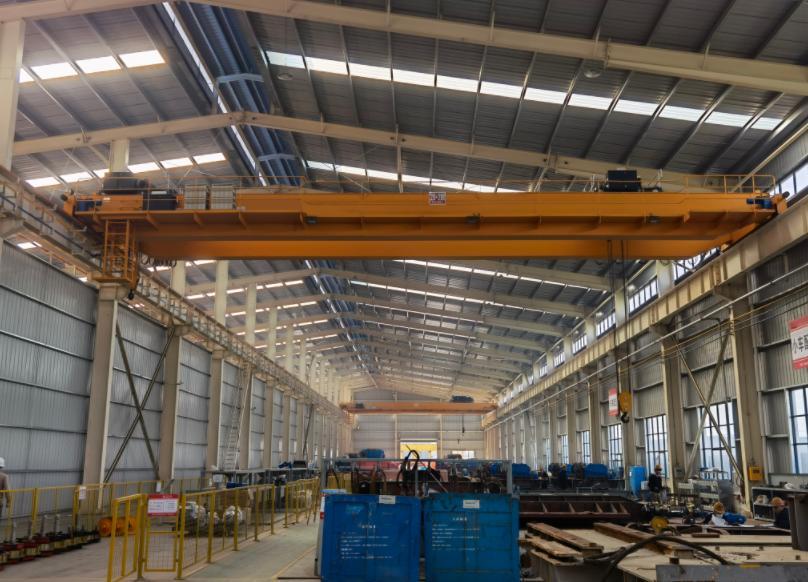
5. Safety and Compliance
Safety is a major concern when using overhead cranes, and investing in high-quality cranes with safety features is essential. Modern overhead cranes are equipped with safety mechanisms such as:
Anti-Collision Systems: Prevent collisions between the crane and other machinery or structures.
Load Sensors: Ensure that the crane does not exceed its weight capacity.
Emergency Stop Systems: Allow for quick shutdown in case of an emergency.
Complying with safety standards and regulations is vital to avoiding legal issues and maintaining a safe work environment. Non-compliance with safety regulations can result in costly fines, accidents, or even work stoppages. Investing in a crane that meets or exceeds safety standards can mitigate these risks and improve workplace safety.
6. Space Optimization
Overhead cranes use vertical space, freeing up valuable floor area for other operations. This is particularly beneficial for factories with limited floor space. By using the crane’s bridge to move materials overhead, factories can increase storage capacity, accommodate more equipment, and enhance workflow without needing additional floor space.
This space-saving feature can be particularly advantageous in smaller factories or manufacturing units that are operating at full capacity.
7. Return on Investment (ROI)
Calculating the return on investment (ROI) is essential when evaluating the purchase of an overhead crane. The ROI is determined by comparing the costs of purchasing, installing, and maintaining the crane with the long-term benefits it provides:
Labor Savings: The reduction in manual labor costs is one of the most immediate benefits of using an overhead crane.
Increased Productivity: Faster material handling translates to more products being produced in less time.
Reduced Accidents: Fewer workplace injuries due to heavy lifting or improper handling of materials result in lower insurance premiums and fewer days lost to accidents.
Improved Product Quality: Accurate and safe material handling helps prevent product damage, which can improve overall product quality and reduce waste.
A positive ROI means that the investment in the crane is paying off over time, leading to significant cost savings and increased profitability.
Conclusion: Weighing the Costs and Benefits
Investing in factory overhead cranes offers numerous benefits, including improved efficiency, enhanced safety, and long-term cost savings. While the initial investment may seem high, the potential for increased productivity, reduced labor costs, and minimized operational risks often justifies the expense. By conducting a thorough cost-benefit analysis and considering factors such as maintenance costs, energy efficiency, safety, and ROI, you can make a well-informed decision on whether an overhead crane is a good investment for your factory.
Ultimately, the right overhead crane will contribute to the long-term success of your operation, boosting productivity, optimizing space, and improving the safety of your workers.
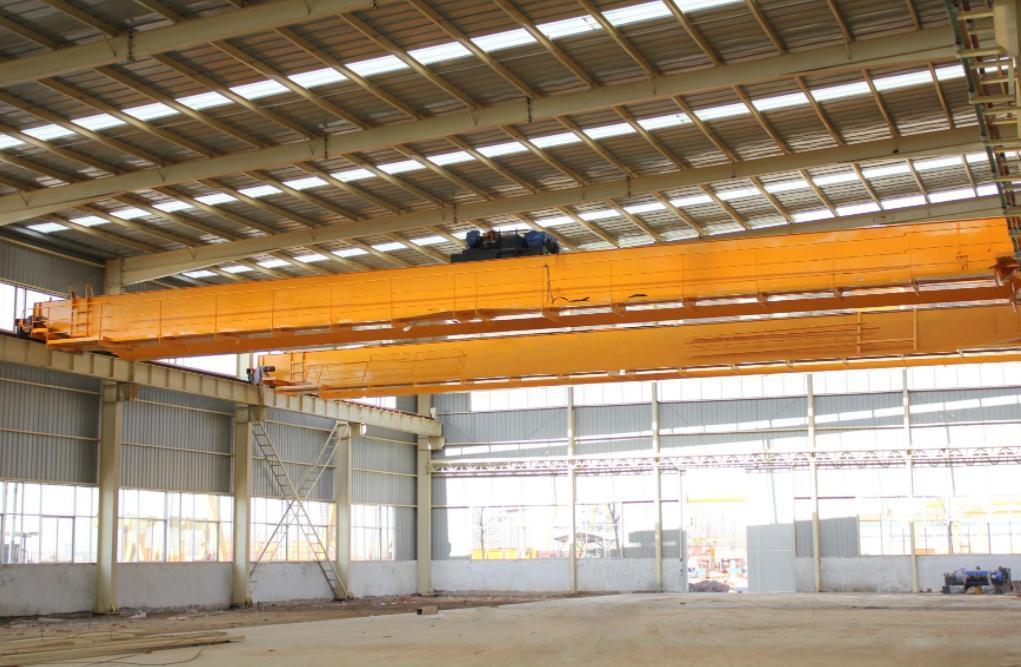
Overhead Crane Design for Explosion-Proof Environments
Le 28/04/2025
In industrial environments where flammable gases, dust, or vapors are present, ensuring the safety of equipment becomes a critical consideration. Among the essential equipment in such settings, overhead cranes are indispensable for transporting heavy loads, materials, and components. However, the risk of explosions in these environments requires specialized crane design to prevent any potential ignition sources that could lead to catastrophic accidents. This article explores the key aspects of designing overhead cranes for explosion-proof environments, covering the safety standards, design considerations, and best practices that help minimize the risk of explosions while maintaining operational efficiency.
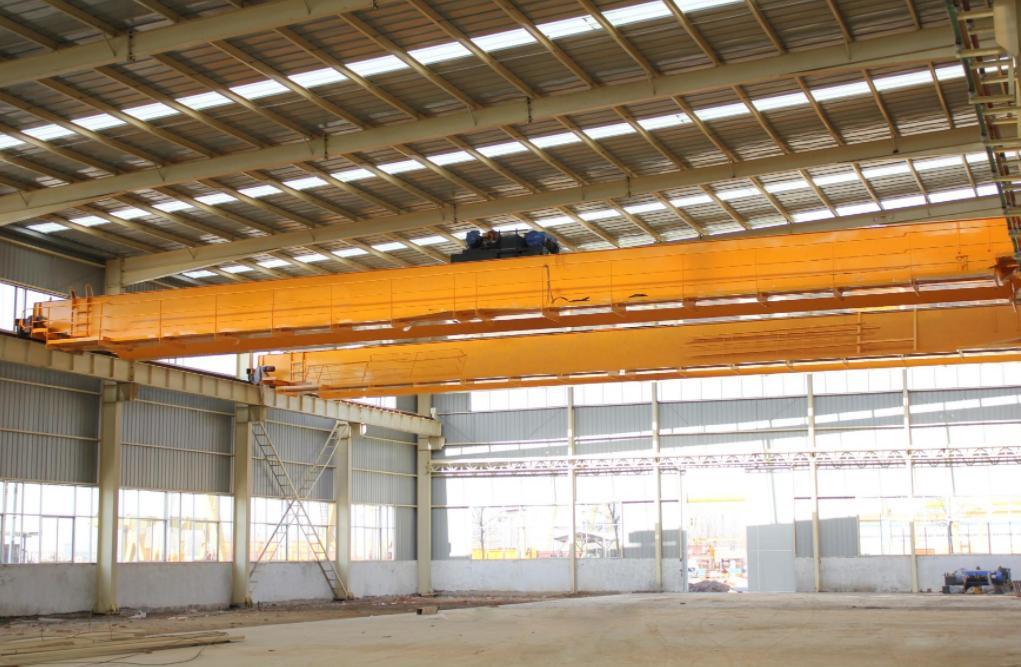
Understanding Explosion-Proof Environments
Explosion-proof environments are defined as areas where the presence of flammable gases, vapors, or dust may create a potentially hazardous atmosphere. Such environments include:
Chemical plants: Areas where volatile chemicals are manufactured or processed.
Oil refineries: Locations where petroleum products are refined and processed.
Gas stations and storage facilities: Areas with the presence of fuel gases.
Grain silos and milling facilities: Areas with combustible dust from grains, flour, or other particulate materials.
In these environments, even a small spark or heat from an electrical component can ignite flammable substances, leading to dangerous explosions or fires. Consequently, the design and operation of overhead cranes in these areas must comply with strict safety standards to prevent such incidents.
Explosion-Proof Standards and Regulations
The design of overhead cranes for hazardous environments is governed by several international and local safety standards. These regulations are crucial in guiding manufacturers to produce explosion proof cranes that can withstand the unique challenges posed by explosive atmospheres. The primary standards include:
IECEx and ATEX Standards:
The IECEx (International Electrotechnical Commission Explosive Atmospheres) and ATEX (Atmosphères Explosibles) certification systems are international standards for equipment used in explosive atmospheres. These regulations outline the classification of hazardous zones (classified into Zone 0, Zone 1, Zone 2 for gases and Zone 20, Zone 21, Zone 22 for dust) and require that equipment used in these zones must be designed, manufactured, and certified as explosion-proof.
NFPA Standards:
The National Fire Protection Association (NFPA) provides guidelines for industrial and commercial safety. NFPA 70 (National Electrical Code) and NFPA 70E (Standard for Electrical Safety in the Workplace) are key standards when designing overhead cranes in hazardous environments. These guidelines ensure that electrical components are suitably protected against explosion risks.
OSHA Regulations:
The Occupational Safety and Health Administration (OSHA) enforces workplace safety standards, including for hazardous environments. In the U.S., OSHA references NFPA and IECEx/ATEX standards, requiring employers to use explosion-proof equipment when operating in volatile atmospheres.
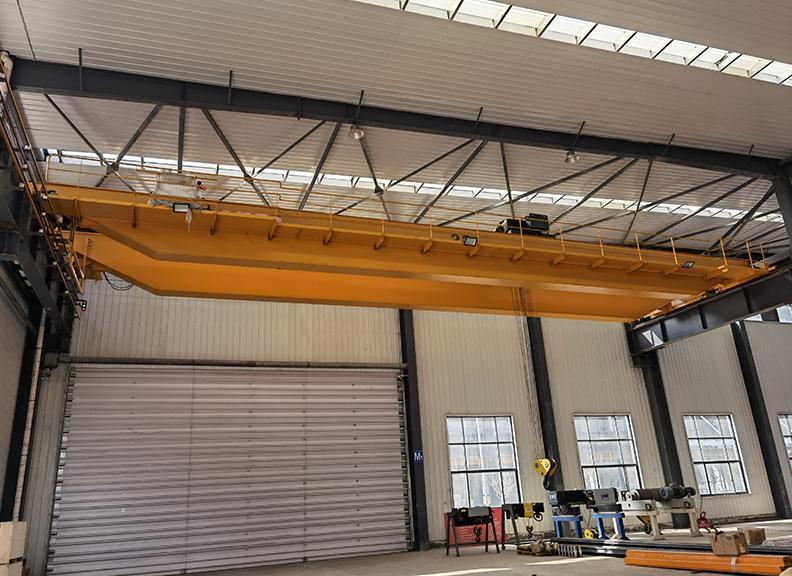
Key Design Considerations for Explosion-Proof Overhead Cranes
Designing an overhead crane for an explosion-proof environment requires careful consideration of several key factors. These include the crane's electrical system, materials used in its construction, mechanical components, and maintenance practices. Below are the critical aspects to consider:
1. Explosion-Proof Electrical Systems
The electrical system of an overhead crane for sale is often the most significant potential source of ignition in explosive environments. Therefore, all electrical components used in explosion-proof cranes must be designed to prevent sparks, electrical arcs, or overheating, which could ignite the surrounding atmosphere.
Explosion-Proof Motors: Motors used in overhead cranes must be housed in specially designed enclosures that prevent any ignition sparks from escaping. These enclosures are typically made of heavy-duty cast iron or steel and are sealed to ensure that no dust or gases can infiltrate the motor.
Intrinsically Safe Wiring and Controls: All wiring and control panels should meet the requirements for being intrinsically safe, meaning they are designed to operate below the temperature and energy levels that could ignite a flammable atmosphere. Additionally, wiring should be installed using explosion-proof conduits to prevent sparks from escaping.
Temperature Control: All electrical components must be thermally protected to ensure they do not overheat and become ignition sources. This may involve the use of temperature sensors, cooling systems, or explosion-proof venting.
2. Material Selection for Structural Integrity
The materials used in the construction of an explosion-proof overhead crane must be resistant to corrosion, wear, and impact while maintaining their structural integrity in the presence of hazardous substances. Common materials for explosion-proof cranes include:
Stainless Steel and Special Coatings: Stainless steel is often used for structural components as it offers excellent resistance to corrosion and can withstand harsh chemicals. Additionally, specialized coatings such as epoxy or zinc can be applied to prevent rusting and damage caused by flammable substances in the environment.
Non-Sparking Components: Cranes in explosion-proof environments should be built with non-sparking materials, especially for components like hooks, chains, and drums. These materials reduce the risk of igniting explosive dust or gases during operation.
3. Safe Operating Mechanisms
Overhead cranes in hazardous environments must feature safe operational mechanisms that do not pose a risk to personnel or cause accidental ignitions.
Explosion-Proof Brake Systems: Brakes used in the crane must be designed to operate safely in explosive environments. Explosion-proof brakes should be fitted to the crane to prevent overheating, which could lead to sparks and ignition.
Overload Protection: Overloading the crane in hazardous environments could cause strain on the equipment, leading to mechanical failures and creating potential ignition sources. Incorporating overload sensors, safety limiters, and automated shutdown systems can prevent such incidents.
Remote Control Operation: To reduce the risk of human error and exposure to hazardous zones, overhead cranes are often operated remotely. This minimizes the chances of sparks being generated from human activity or electrical contact in dangerous areas.
4. Explosion-Proof Enclosures for Control Systems
The control panels of an explosion-proof crane must be housed in explosion-proof enclosures to protect the electrical systems from hazardous environments. These enclosures are typically sealed and reinforced to prevent any sparks from escaping. Furthermore, the control systems should be designed to function without generating excessive heat or causing electrical arcs.
Automated Shutdown Features: In cases where there is a malfunction in the control system, the crane should automatically shut down to prevent any potential ignition sources. This is particularly important for maintaining safety in explosive environments.
5. Regular Maintenance and Inspections
In explosion-proof environments, overhead cranes must be regularly inspected and maintained to ensure their safe operation. Specialized maintenance procedures should be established to monitor and maintain the explosion-proof features of the crane, including:
Regular Inspections: Inspecting electrical systems, wiring, motors, and mechanical components ensures they are functioning as expected. Any signs of wear or damage should be addressed immediately.
Scheduled Replacements: Some components, such as seals and insulation materials, may degrade over time and require replacement. Scheduled maintenance ensures these components are replaced before they pose a safety hazard.
Cleaning Procedures: In environments with dust or other hazardous particles, cleaning procedures must be implemented to prevent buildup in the crane’s components. Dust accumulation could become an ignition source if not properly managed.
Best Practices for Safe Operation
Alongside proper design and construction, safe operation practices are essential to minimizing risks in explosive environments:
Operator Training: Operators should be thoroughly trained on how to operate cranes in hazardous areas, focusing on preventing sparks and avoiding overloads. They should also be aware of the proper emergency shutdown procedures.
Hazardous Zone Markings: Clearly marking hazardous zones around the crane's operational area helps ensure that workers maintain a safe distance from the crane's moving parts.
Proper Grounding: Proper grounding of all electrical components reduces the risk of electrostatic discharges, which could cause sparks and ignite flammable substances.
Conclusion
Designing an overhead crane for explosion-proof environments requires a careful balance of advanced engineering, materials science, and operational safety practices. Adhering to industry standards, such as IECEx, ATEX, and NFPA regulations, ensures that cranes can operate safely in environments with hazardous gases, vapors, or dust. By focusing on explosion-proof electrical systems, non-sparking materials, safe operating mechanisms, and ongoing maintenance, manufacturers can deliver overhead cranes that not only meet stringent safety requirements but also maintain operational efficiency. With proper design and safety measures in place, overhead cranes can continue to be an invaluable tool for industries working in explosion-prone environments.
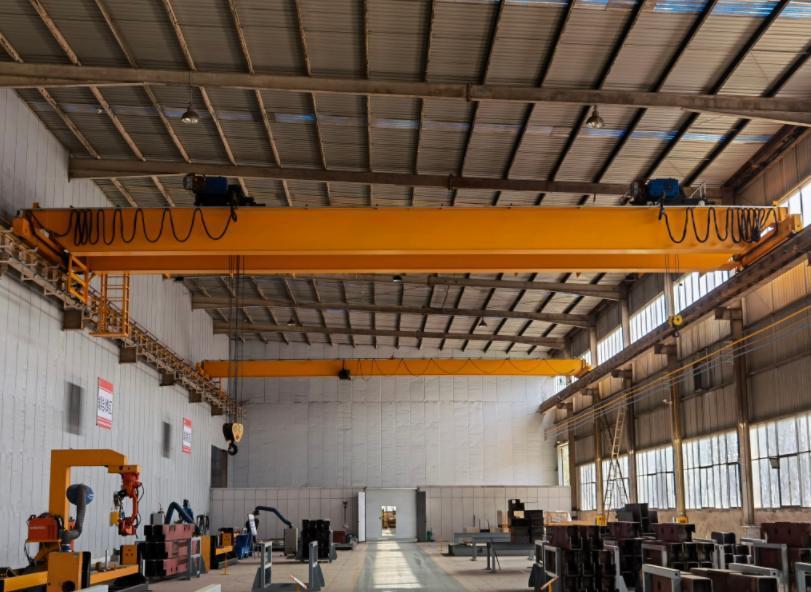
50-Ton Overhead Crane Safety Features You Should Know About
Le 27/04/2025
Overhead cranes are essential in many industries for lifting and moving heavy loads. A 50-ton overhead crane, in particular, is a vital piece of equipment in environments such as steel mills, construction sites, and manufacturing plants, where lifting substantial loads is a regular necessity. However, with the massive weight capacity comes significant safety concerns that need to be addressed to prevent accidents, injuries, and property damage. To ensure the safe operation of a 50-ton overhead crane, it is essential to understand the safety features that are incorporated into the design, operation, and maintenance of the crane.
In this article, we will explore the critical safety features of a 50 ton overhead crane that you should know about to ensure both the safety of operators and the efficiency of crane operations.
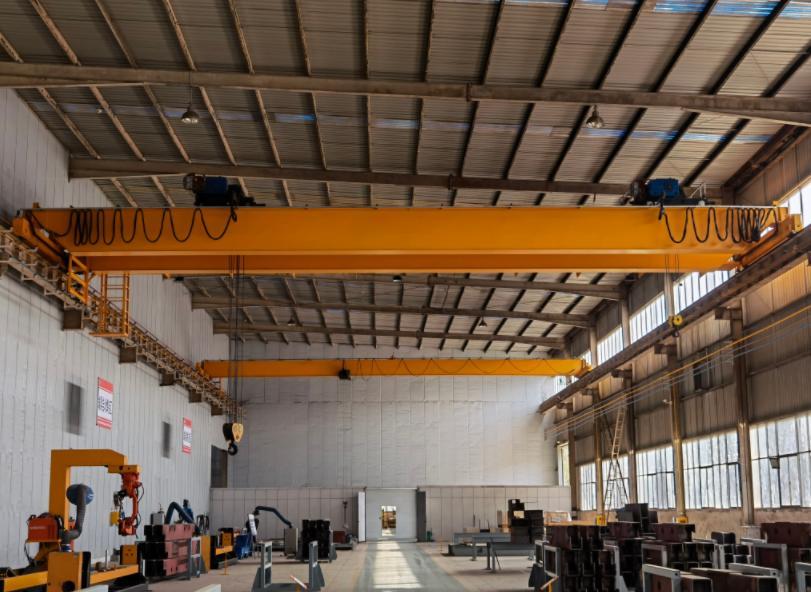
1. Overload Protection System
One of the most important safety features of any crane, including a 50-ton overhead crane, is the overload protection system. Overloading a crane is one of the leading causes of crane accidents, as exceeding the rated load capacity can lead to mechanical failure, tipping, or even collapse of the crane structure.
An overload protection system is designed to monitor the crane’s load in real time. If the load exceeds the crane’s maximum capacity (50 tons in this case), the system will automatically stop the lifting operation to prevent overloading. This feature is crucial for preventing damage to the crane’s hoist, trolley, and structural components, as well as avoiding potential catastrophic accidents.
The overload protection system is often integrated with the crane’s control panel, allowing the operator to easily view real-time load data. It may also include an audible alarm or visual indicator to alert the operator if the double girder overhead crane is nearing or exceeding its rated load limit.
2. Limit Switches
Limit switches are another essential safety feature on a 50-ton overhead crane. These devices help to prevent the crane from exceeding its safe operating limits by restricting the movement of the crane’s hoist, trolley, and bridge.
Limit switches are typically installed at the end of the crane’s travel path, both horizontally and vertically. For example, when the hoist reaches the maximum lifting height, a limit switch will automatically stop the motion to prevent further travel that could damage the crane or the load. Similarly, horizontal limit switches ensure that the crane’s trolley does not move beyond the safe operational boundaries.
These switches are critical for preventing mechanical damage to the crane and for maintaining control over the crane’s operation. They also help avoid safety hazards associated with lifting or transporting heavy loads beyond the crane's designed capabilities.
3. Safety Locking Mechanisms
Safety locking mechanisms are used on critical parts of the crane, such as the hook and the hoisting mechanism, to prevent accidental disengagement or unexpected movements during operation. These mechanisms ensure that the hook, which is responsible for lifting the load, remains securely attached to the load and does not accidentally release it during operation.
In many 50-ton overhead cranes, safety latches or locks are built into the hook assembly to keep the hook securely fastened to the load. This feature is essential to prevent accidental load detachment, which could lead to dangerous situations, especially in high-rise construction or heavy lifting tasks.
The safety locking mechanism can also be integrated with sensors and alarms that notify the operator if the safety lock is not properly engaged or if there is any risk of a detachment.
4. Anti-Sway Systems
In heavy lifting applications, especially when lifting loads with a large mass, one of the challenges faced by crane operators is the risk of load sway. When a load swings during transportation, it can cause instability, making the crane more difficult to control and increasing the risk of accidents.
An anti-sway system is designed to mitigate the effects of load sway. This system uses sensors, feedback loops, and sophisticated algorithms to detect the movement of the load and automatically adjust the crane’s speed and movement patterns to reduce swaying.
For a 50-ton overhead crane, which is likely to carry large, heavy, and potentially awkward loads, an anti-sway system is crucial for ensuring smooth, controlled, and precise handling. The system helps to minimize risk by preventing unpredictable load swings that could lead to damage to surrounding infrastructure or injuries to workers in the vicinity.
5. Operator Control Systems
The operator is one of the most significant factors in the safety of a 50-ton overhead crane. Therefore, an effective operator control system is essential for providing clear, intuitive, and responsive control over the crane’s movements.
Modern overhead cranes typically include both ground-based and remote control systems. These systems allow the operator to control the crane from a safe distance, reducing the risk of injury. Additionally, remote controls may offer features like emergency stop buttons, speed control, and direction adjustments to enhance safety.
The operator control systems often include safety interlocks that prevent the crane from operating under unsafe conditions, such as if the crane is not in the correct position or if there is a malfunction in one of the crane’s systems. These control systems are typically designed to be user-friendly, with clear indicators that help operators make quick decisions and maintain a high level of safety.
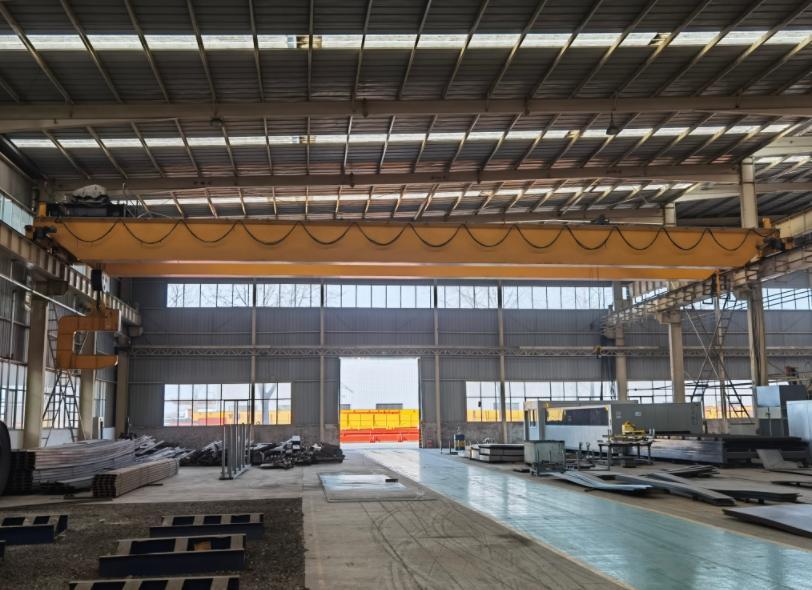
6. Warning and Signal Systems
Clear communication is critical for safety when operating a 50-ton overhead crane, especially in busy or crowded environments. Warning and signal systems provide vital information to both the crane operator and nearby workers about the crane’s operation.
Warning systems often include audible alarms, flashing lights, or signal horns that alert people in the vicinity of the crane when it is in operation. These signals are especially important in environments where the operator's visibility is limited or when workers may be unaware of the crane's movements.
In addition to these physical signals, visual displays on the crane’s control panel provide the operator with real-time data about load weight, crane position, and other crucial parameters. This data helps the operator make informed decisions, reducing the risk of accidents and ensuring smooth operations.
7. Emergency Stop Mechanisms
An emergency stop system is a fundamental safety feature on all 50-ton overhead cranes. This system is designed to immediately halt crane operations in the event of an emergency or if a dangerous situation arises. An emergency stop button is usually located in multiple locations, including on the operator’s control panel and on the crane’s structure itself.
The emergency stop system is a critical tool for preventing accidents and injuries in situations where immediate intervention is necessary. For example, if the crane encounters a mechanical failure, or if a worker enters a dangerous area, the operator can quickly stop the crane’s operation to prevent harm.
The emergency stop mechanism is often integrated with the crane’s other safety features, such as the overload protection system and limit switches, to provide an added layer of security in case of emergencies.
8. Regular Maintenance and Inspections
Regular maintenance and inspections are essential for ensuring that all safety features of the 50-ton overhead crane remain in optimal working condition. Cranes should be inspected periodically for wear and tear, and any malfunctioning safety systems should be immediately addressed.
A maintenance schedule should be established based on the manufacturer’s recommendations, and it should include checks for key components such as hoists, limit switches, safety locks, and wiring. In addition, safety audits should be conducted regularly to ensure that the crane is compliant with industry standards and safety regulations.
Operators should also be trained to perform routine visual checks before using the crane, ensuring that all safety systems are in place and functioning correctly.
Conclusion
The safety of a 50-ton overhead crane is paramount for both the operator and the surrounding workers. Incorporating safety features like overload protection systems, limit switches, anti-sway systems, safety locking mechanisms, and emergency stop features ensures that the crane operates smoothly, preventing accidents and damage.
By investing in these safety systems, training crane operators thoroughly, and performing regular maintenance, industrial facilities can enhance the safety and reliability of their 50-ton overhead cranes, keeping both their workers and their operations safe.